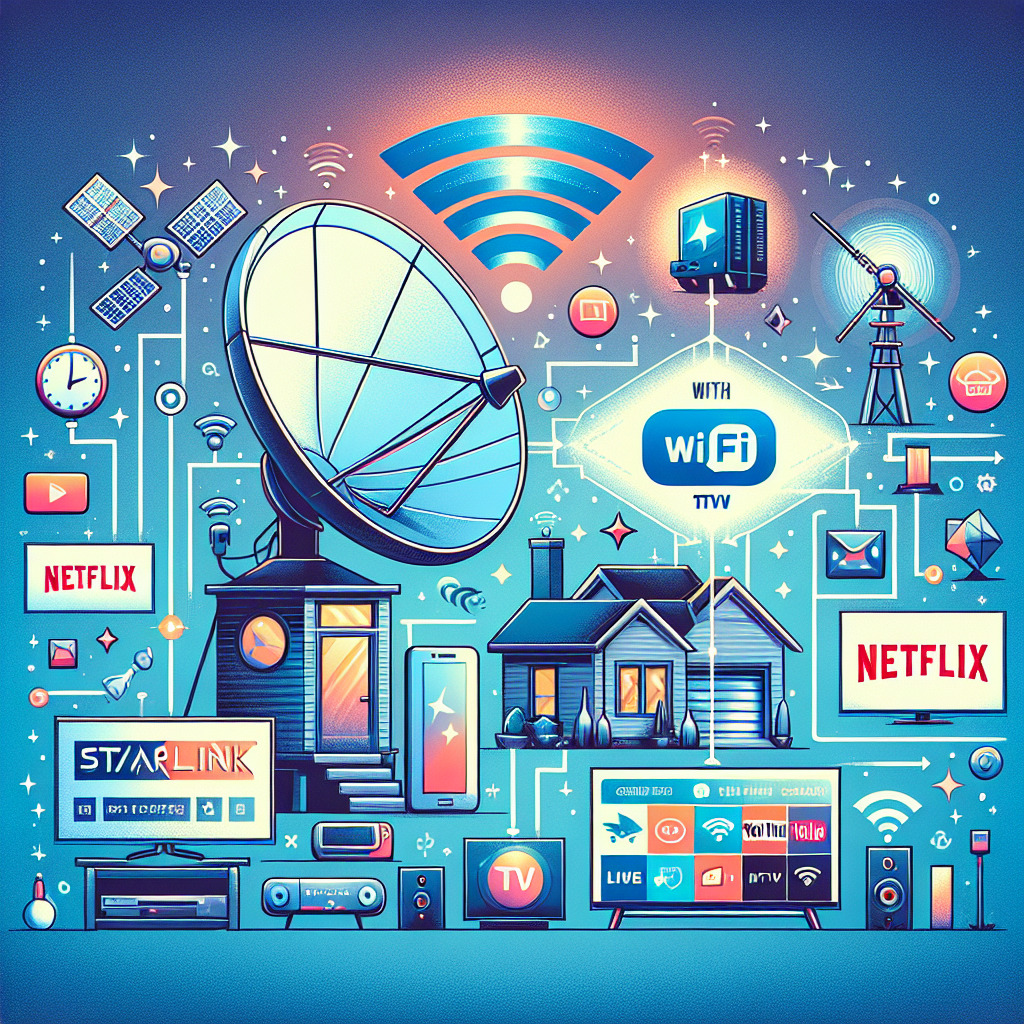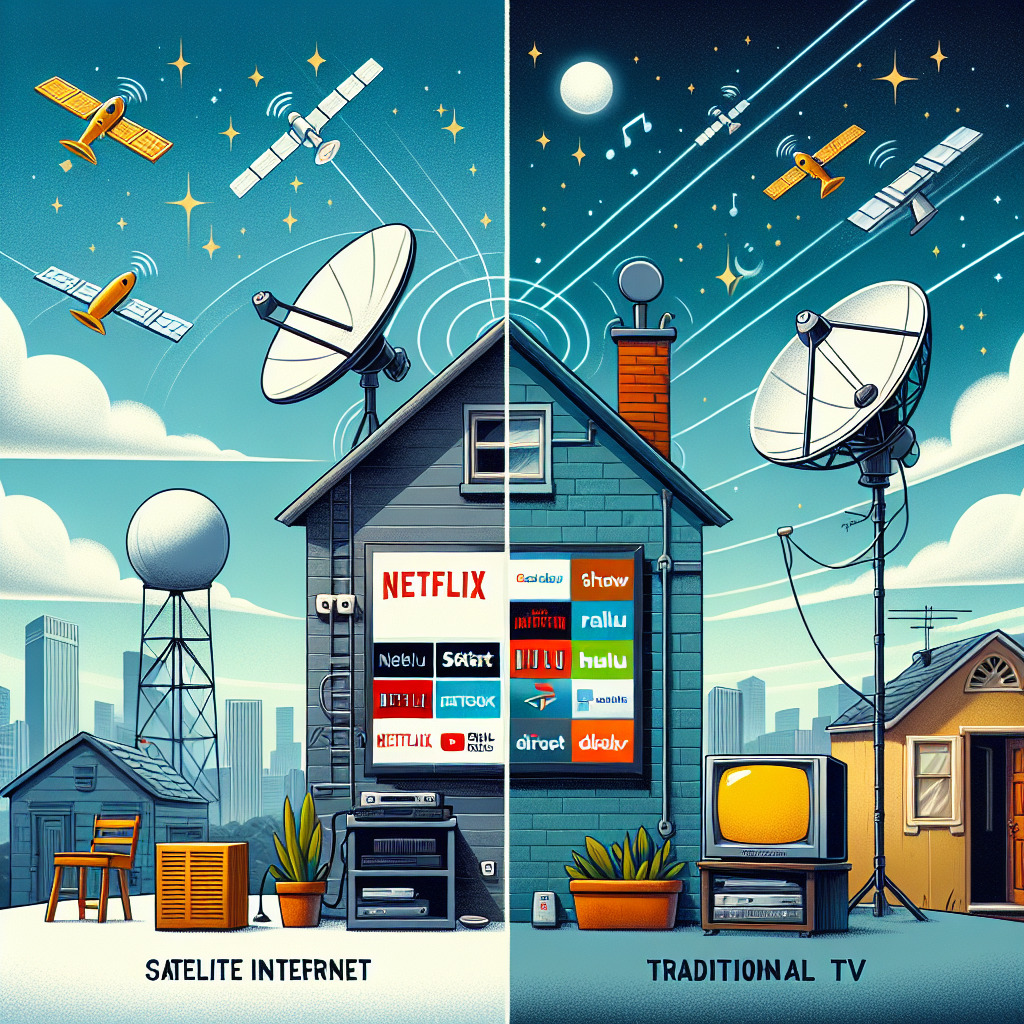Key Takeaways
– Starlink provides high-speed internet, enabling efficient streaming.
– Local TV channels accessible via OTA antennas or streaming.
– Streaming services offer alternatives to traditional cable.
– Understanding difference between satellite internet and TV is crucial.
Introduction
Many people often confuse Starlink with traditional satellite TV providers. However, Starlink offers high-speed satellite internet services and does not directly provide television programming. Still, you can cleverly combine Starlink’s internet capabilities with streaming services and antennas to completely replace your cable TV. Intrigued? Read on to discover how!
Difference Between Satellite Internet and Satellite TV
Satellite Internet: Starlink’s Core Function
Satellite Internet like Starlink works by connecting your home to the internet using satellites. A dish is installed at your residence, which sends and receives data, providing you with reliable internet connectivity. This is perfect for streaming, browsing, gaming, and other online activities.
Satellite TV: How It Differs
Unlike Starlink, satellite TV providers such as Bell TV, ExpressVue, and Shaw Direct use satellite dishes designed to receive TV signals. This services bring in a variety of channels and television programming directly to your TV set. These services do not provide internet; thus, they are primarily aimed at TV viewing.
Connecting Starlink to Your TV
To make the most out of your Starlink service, here’s a step-by-step guide to connect your TV to the Starlink internet:
- Turn On Your Starlink Router: Ensure your Starlink router is operational and providing a Wi-Fi signal.
- Access Network Settings on Your TV: Navigate to your smart TV’s network settings.
- Search for Your Starlink Wi-Fi Network: In the network settings, select the option to detect available Wi-Fi networks.
- Connect to Your Network: Locate your Starlink Wi-Fi network and select it.
- Enter Password: Input the password for your Starlink network to establish the connection.
Once connected, your TV will utilize Starlink’s high-speed internet for streaming content.
Accessing Live TV on Streaming Services
With Starlink’s low-latency, high-speed internet, you can access a wide array of live TV channels through various streaming services:
- Hulu: Offers a mix of live and on-demand TV channels, including local stations in many markets.
- YouTube TV: Provides a broad range of live TV options with the inclusion of local network stations.
- Sling TV: Customizable plans that cater to various viewing preferences, featuring a selection of live TV channels.
These platforms eliminate the need for a physical antenna and offer flexible viewing options, from live broadcasts to on-demand content.
Using Antennas for Local Channels
Over-The-Air (OTA) Antennas: A Cost-Effective Solution
If streaming services don’t cover all of your local channels, consider integrating an Over-The-Air (OTA) antenna into your setup. OTA antennas receive local TV stations for free within approximately 120 kilometers range. They come in various sizes, ranging from compact models that fit behind your TV to larger, roof-mounted versions.
Making It Work: TV Tuners
Ensure your television is equipped with a built-in tuner to work with an OTA antenna. If your TV lacks this feature, you’ll need an external tuner to decode the broadcast signals, which can also be integrated into your smart TV.
Starlink and Future of Satellite TV
Potential But Unlikely: Starlink as a TV Provider
Starlink’s advanced technology could theoretically pick up TV signals, but its primary purpose is to provide fast, reliable internet. This focus allows for a significant enhancement in streaming quality, making it a powerful alternative to traditional satellite TV providers.
What To Expect: Streaming is the New Norm
With consistent advancements in online streaming technology, the traditional formats of TV consumption are steadily declining. Streaming platforms supported by Starlink’s robust internet can offer everything from network TV to niche programming, delivering a customized, on-demand viewing experience.
Summary
Using Starlink primarily for internet service is an efficient way to transition from traditional cable or satellite TV. The combination of Starlink’s high-speed, low-latency internet and modern streaming services can provide a comprehensive entertainment solution. Local TV channels can still be accessed via OTA antennas or streaming services that offer local network options.
In conclusion, while Starlink itself is not a TV provider, paired with the right services and tools, it can effectively replace your traditional cable TV. Embrace a newer, more flexible way to enjoy television!




